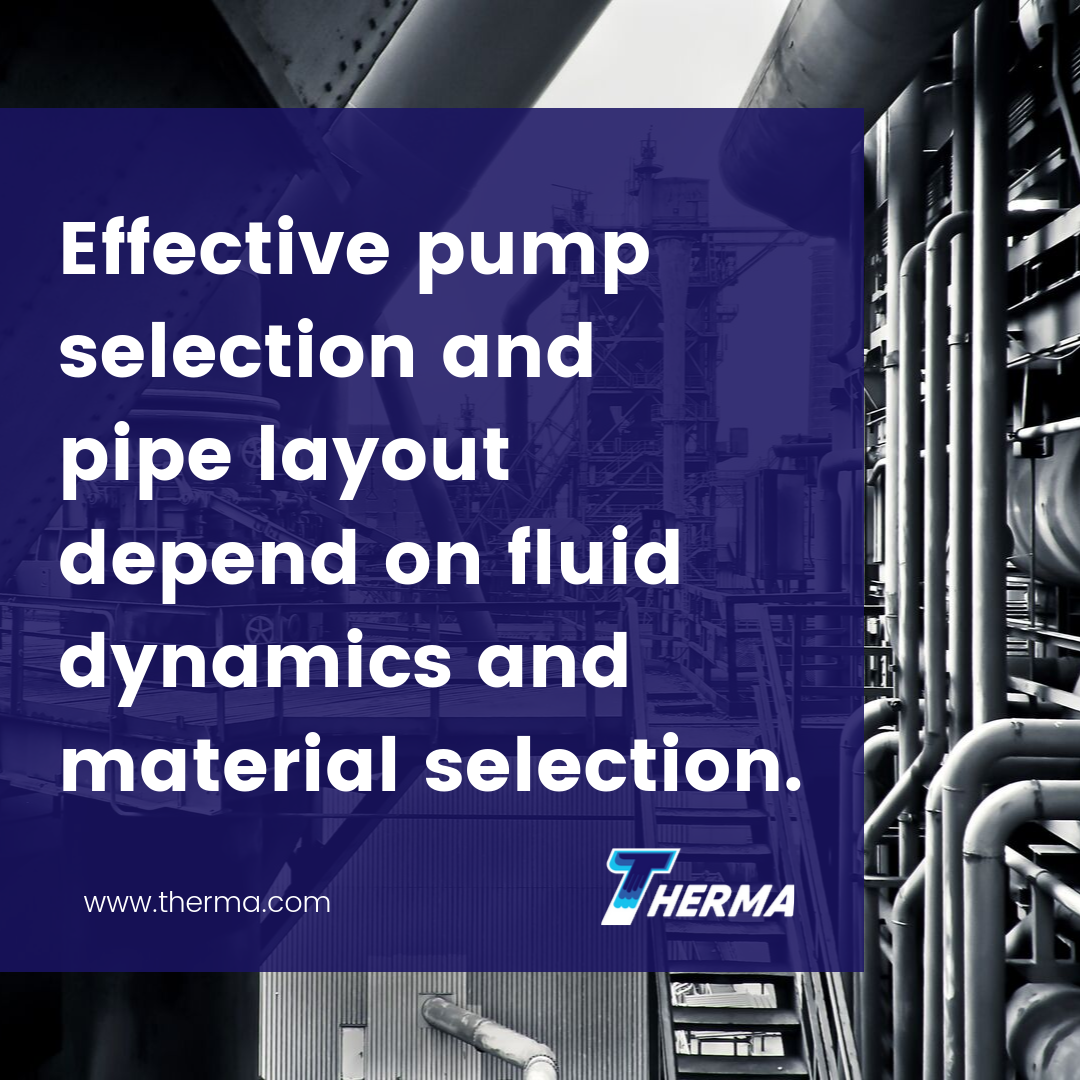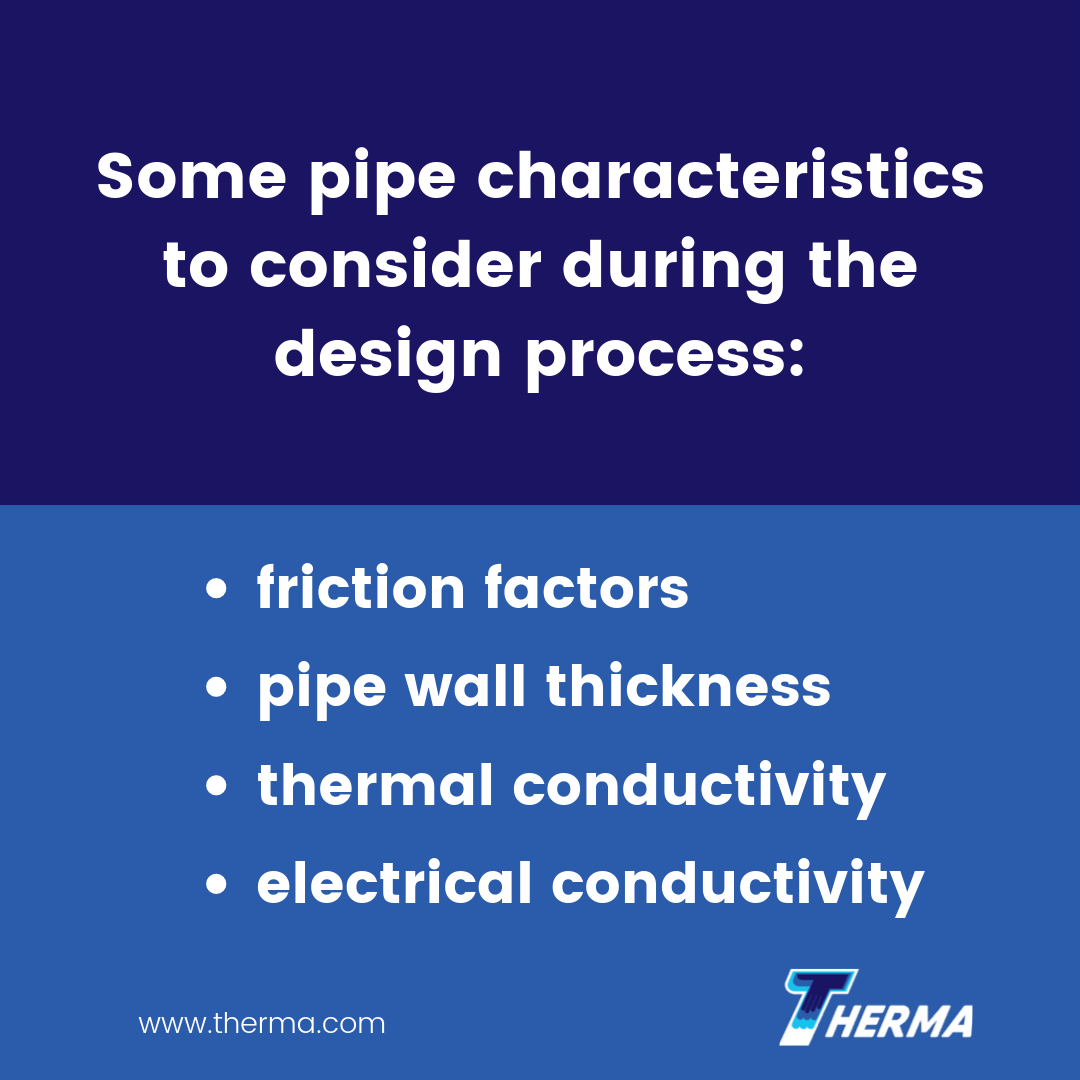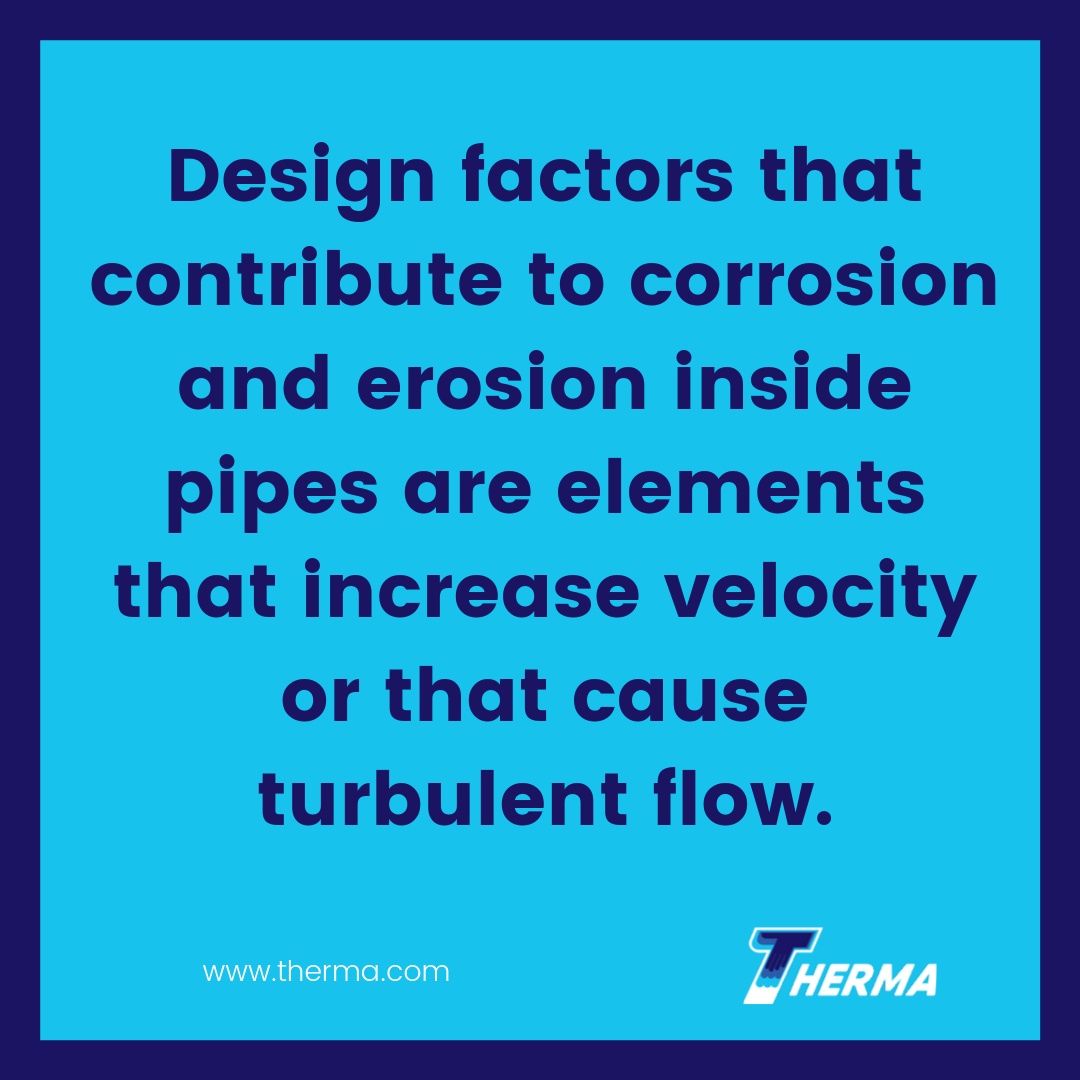A Guide In Piping System Design
By Patti Dees
Proper piping system design is critical for efficient movement of chilled or hot water in HVAC systems. Relevant codes and standards provide the basis for pipe design, but effective pump selection and pipe layout depend on fluid dynamics and material selection.

Designers incorporate several key aspects, from fluid dynamics to piping systems configuration.
Fluid dynamics focuses on how fluids move, considering both energy and momentum. The energy of a fluid is related to changes in elevation, temperatures, pressures and velocities, and directly impacts pump choice, placement and pipe layout. Momentum includes velocities, forces on pipes from fluid flow, and changes in pressure and flow from friction. Force, velocity and pressure are considerations in choosing pipe materials and design layout.
Fluid Dynamics: Terms to Know
Flow rate and velocity are related. Velocity is the distance traveled over time (e.g., feet per minute, miles per hour). Flow rate is the volume of fluid over time as it passes through a point in the pipe (e.g., cubic feet per minute). Flow rate and velocity are used to size pipes and select pumps. Narrower pipes or restrictions in piping will increase the velocity.
Flow pressure is the force the fluid needs to overcome resistance in the direction it is traveling. The pressure gradient from one point in the pipe to any other point in the pipe is what allows the fluid to flow. There is a relation between velocity and pressure. An increase in velocity decreases the pressure. Fluid pressure, which is different, is the force the fluid exerts perpendicular to the pipe wall. Wall thickness of pipes should easily resist this pressure.
Friction is a force that resists motion between objects or substances. Sources of friction are the roughness of internal pipe surfaces, the length and diameter of pipe, and the fittings, valves and instruments that disrupt flow. Friction causes pressure drop and reduces velocity.
Selecting Materials

Some pipe characteristics to consider during the design process are friction factors, pipe wall thickness, and thermal and electrical conductivity. These characteristics directly impact pressure loss, heat loss to the environment, and durability. Material selection often depends on standards and codes, but where the design team has flexibility, it should carefully consider the characteristics and design elements that can either decrease negative impacts or take advantage of particular features.
Pressure losses come from many sources. For example, fittings and valves, friction from rough pipe interiors, and bends in pipes all cause loss of pressure within the pipe. The pressure difference between points before and after sources of pressure loss is the pressure drop. As the pressure drop changes, the flow characteristics change. System designs should provide adequate motive force from pumps so that the fluid makes it through the pipes. Different pipe materials will have different roughness coefficients or friction factors. Valves and fittings have equivalent factors.
Pipe expansion requires balancing material choice and design. Pipe expansion is an unavoidable response of the pipe material when exposed to the temperature of the working fluid. Material characteristics determine how pronounced the response will be. Expansion and contraction distort the pipe’s girth and length. These changes stress the pipes, fittings and valves.
Piping system designs can reduce the impact of expansion and contraction. Design elements, such as well-placed expansion loops, build flexibility into the system to accommodate the additional stresses. These design options introduce pressure losses, but it is a tradeoff that ensures the pipes last longer.
Special Concerns in Piping System Design

Design factors that contribute to corrosion and erosion inside pipes are elements that increase velocity or that cause turbulent flow. Except when necessary, avoid restrictions in piping and limit bends and elbows. In some cases, a design problem causes both noise and damage. High velocity flow and sudden pressure changes not only increase damage to interior pipe surfaces or pumps, but they increase noise.
Water hammer occurs with sudden pressure changes within a pipe, such as when a valve is quickly closed. This is more than a simple noise issue, however. The sudden pressure change creates a pressure wave that can damage pipes. Poor valve choice or operation is a common culprit.
Sudden changes in pressure can also cause cavitation. Vapor forms in the pipe due to low pressure or very high velocities. Once the pressure increases above the fluid’s vapor pressure, the fluid rushes into the collapsing vapor bubble. This creates a small area of high pressure that can damage pipes and pumps.
Efficient HVAC systems are more than the best air handling units and chillers. Piping design is equally important. Fluid dynamics and material selection should work together for an efficient piping system.
Biography:
Patti Dees is a chemical engineer turned writer. She spins her polymath nature to produce clear and informative pieces on technical topics.
References:
- Cooke, Richard, (January,2015). Flow in Pipes. Land and Water Management Systems. Retrieved September 2019.
- https://www.nxp.com/docs/en/application-note/AN1573.pdf?&srch=1
- https://www.corzan.com/blog/how-to-design-an-industrial-piping-system-for-ideal-flow-rate-and-velocity
- https://www.britannica.com/science/cavitation
- https://www.corzan.com/blog/how-to-account-for-thermal-expansion-in-piping-system-design
- https://www.csemag.com/articles/selecting-pipe-and-piping-materials/







